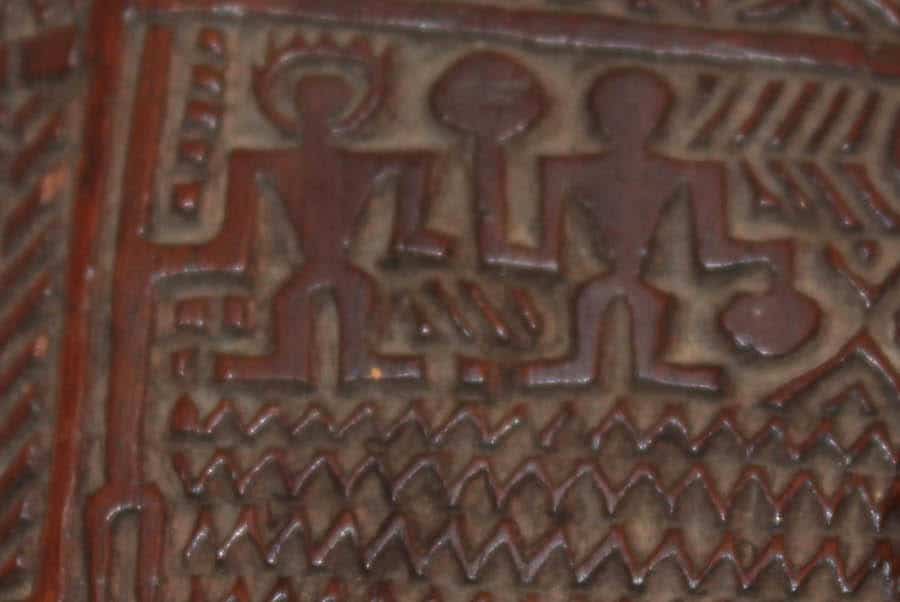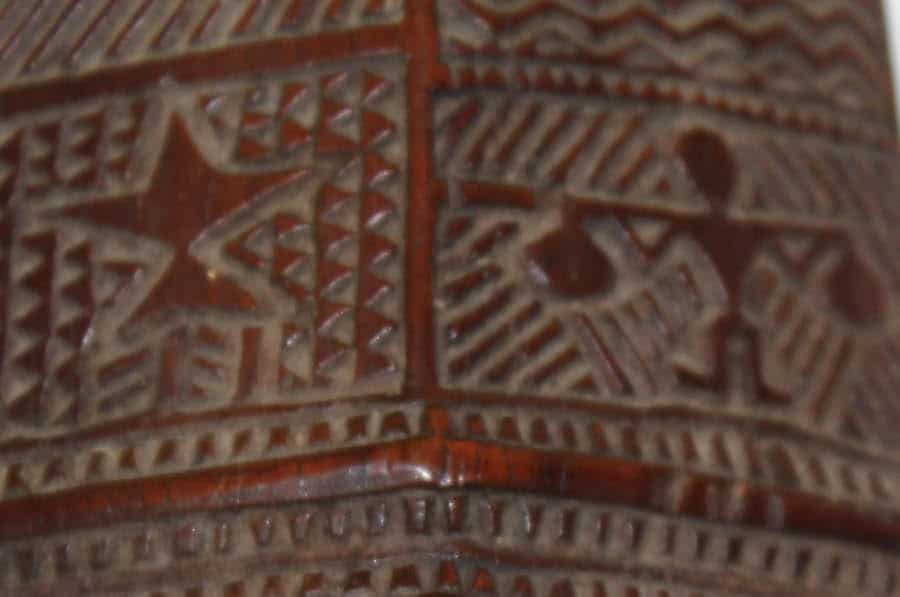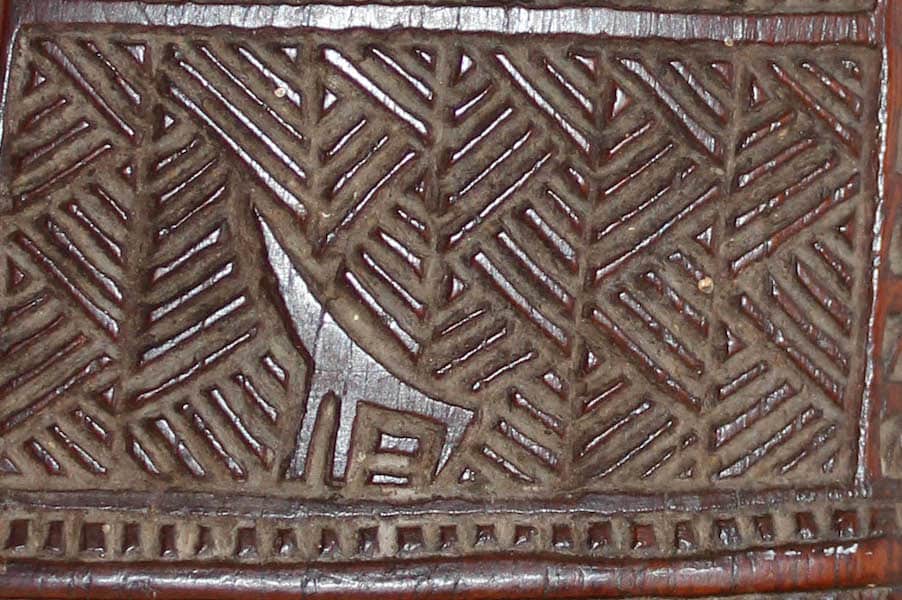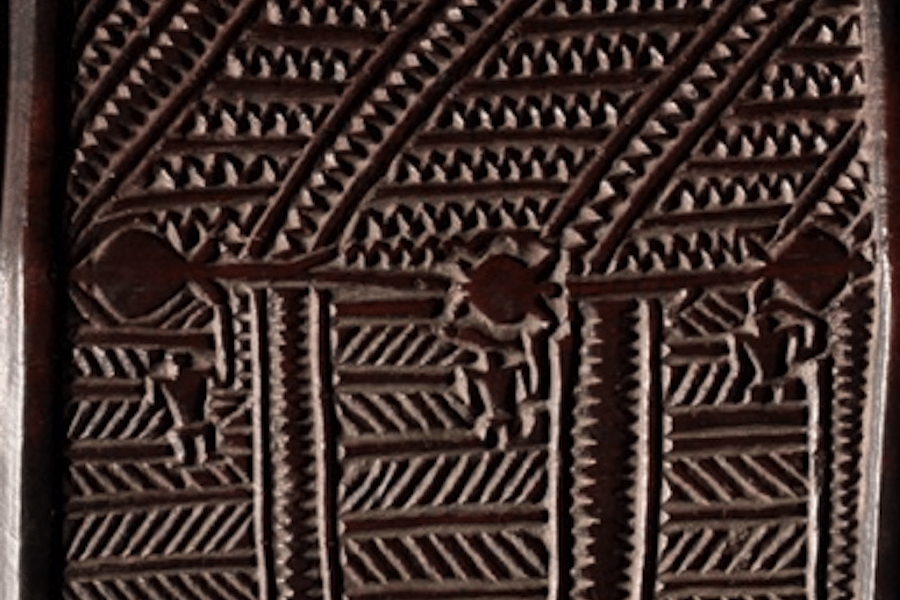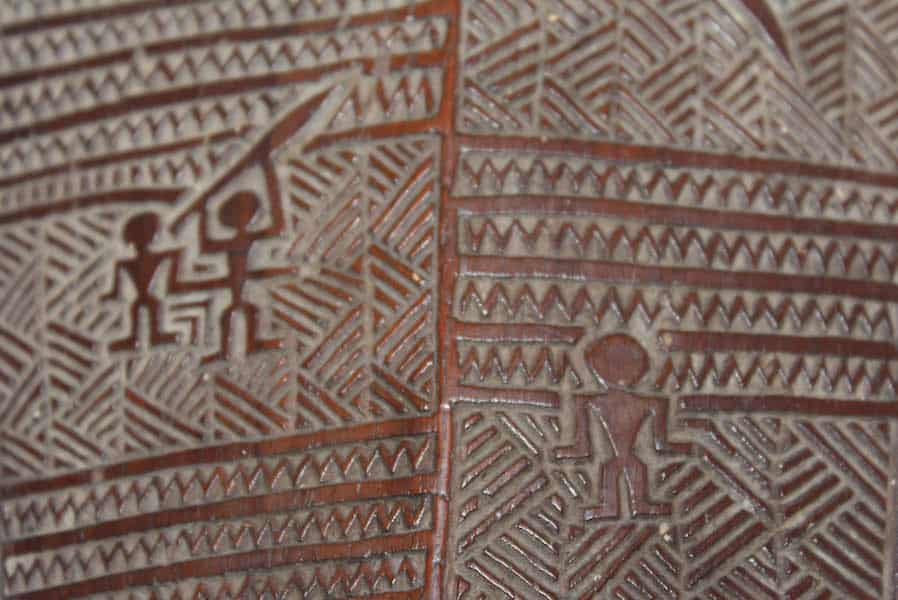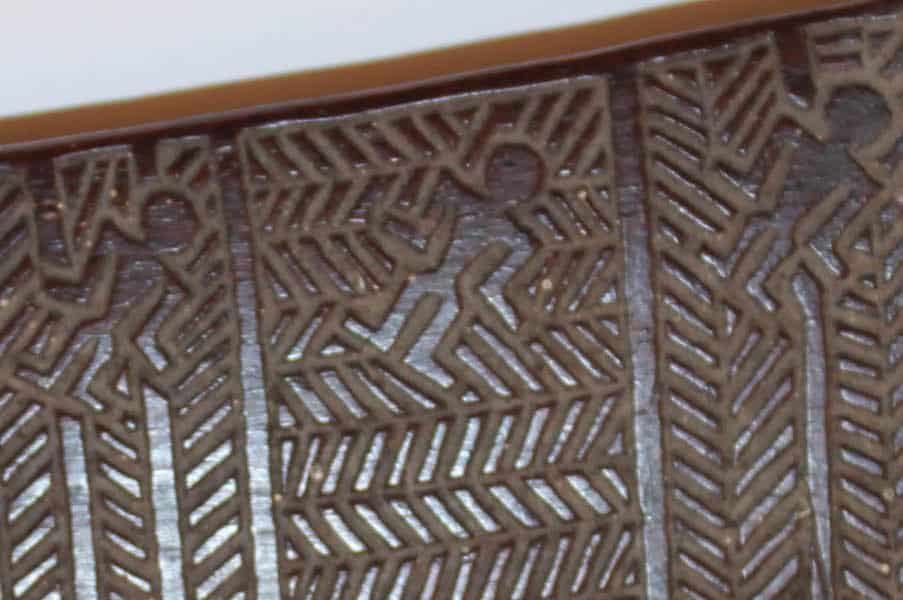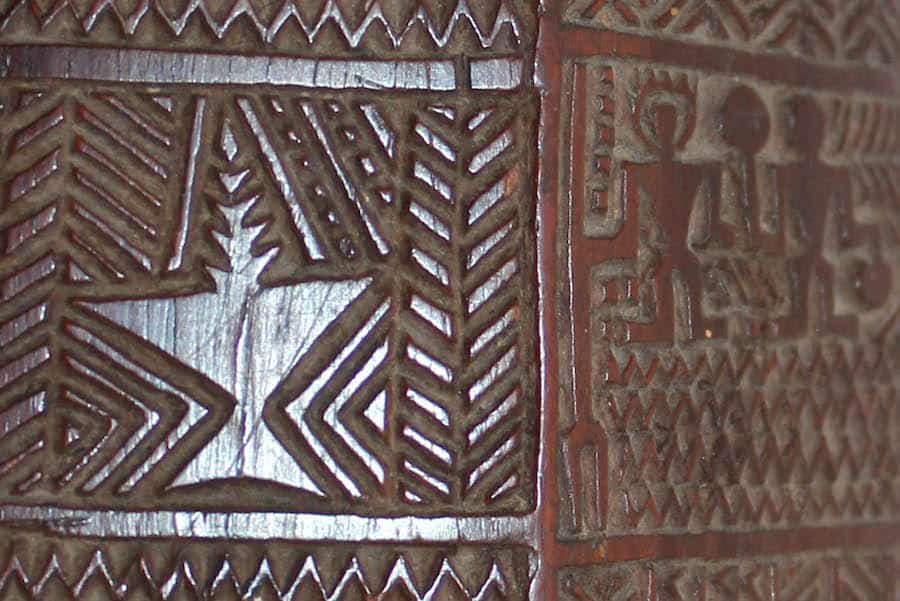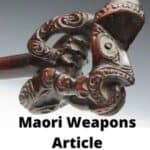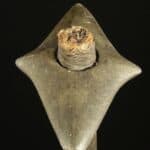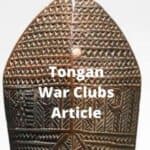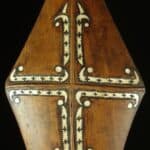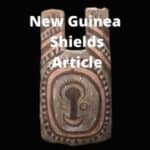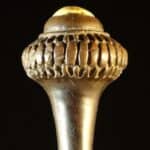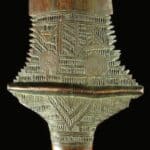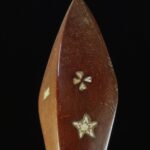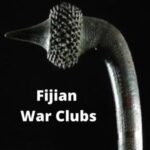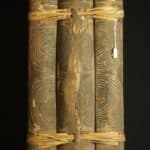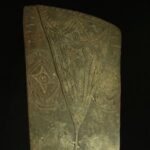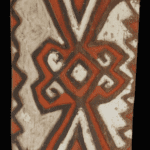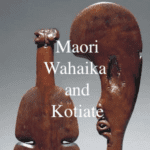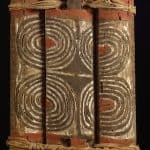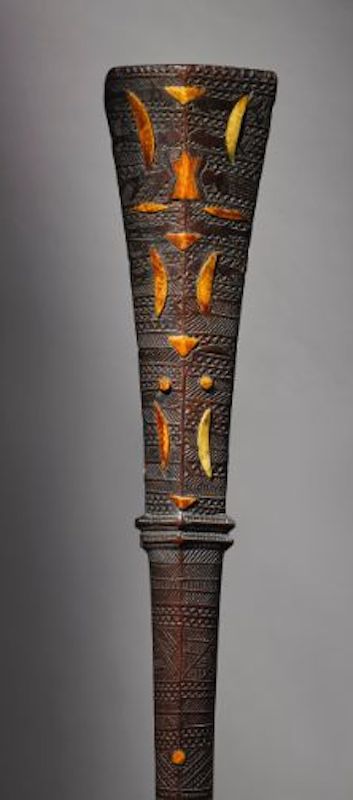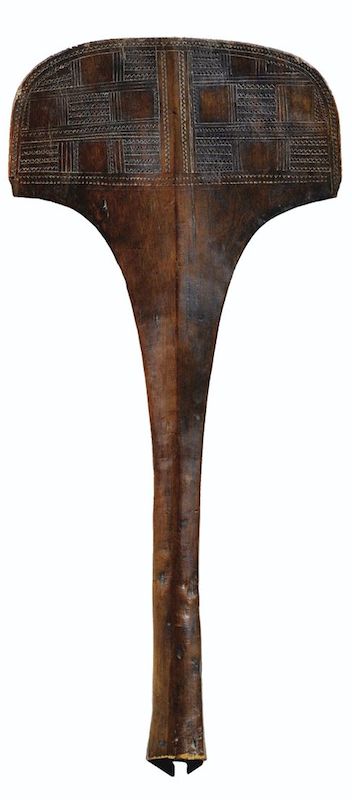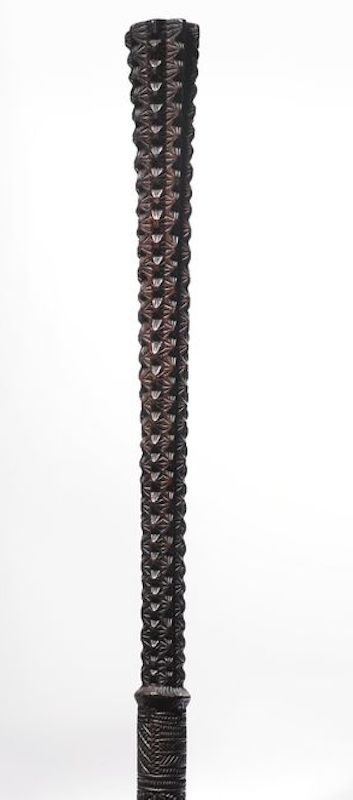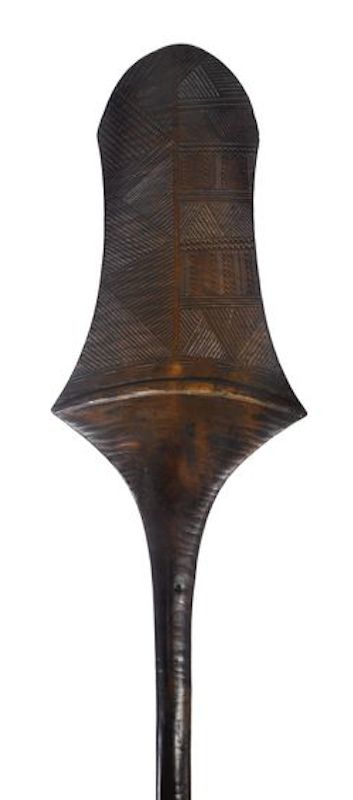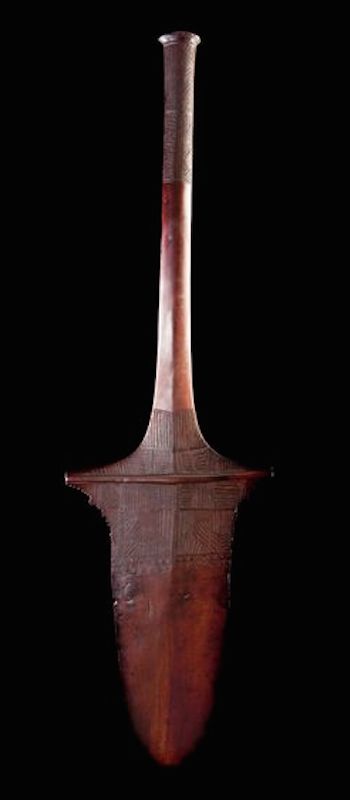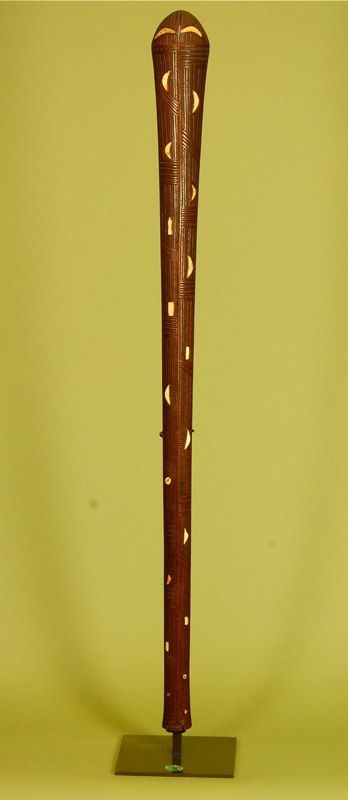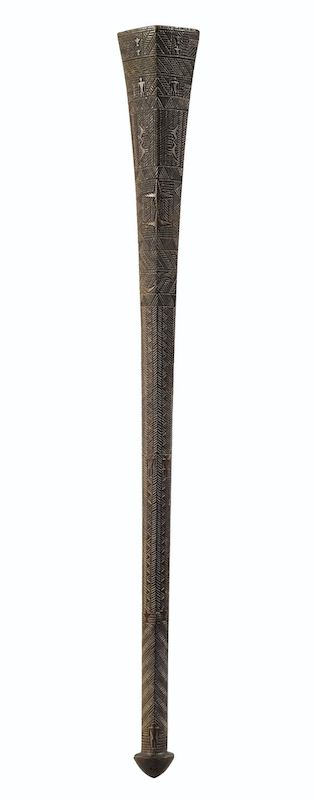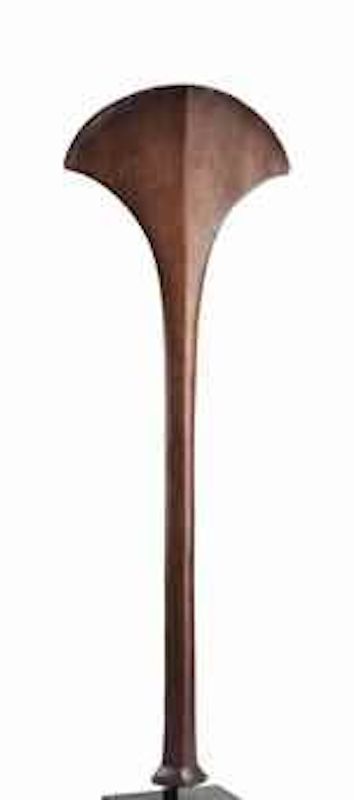Tongan clubs
Clubs from Tonga are one the most common forms of Polynesian art. Tongan clubs comprise roughly 20 percent of the Polynesian art collected on the Captain James Cook voyages.
This is no doubt is due to the superb craftsmanship found
The majority of Tongan clubs are reasonably priced being affordable to the majority of collectors of tribal art. The exceptional Tongan club though can sell for large amounts.
Good clubs are still reasonably easy to find in the tribal art market. Exceptional clubs though are in short supply and getting very hard to find. In Western Polynesia, each island group developed a variety of styles of long clubs made from ironwood. Tongan clubs have the most skillful geometric incising.
I Buy Tongan Clubs so if you have a Tongan club you would like to sell contact me. If you just want to know the value of your club that is fine. I always enjoy seeing new pieces.
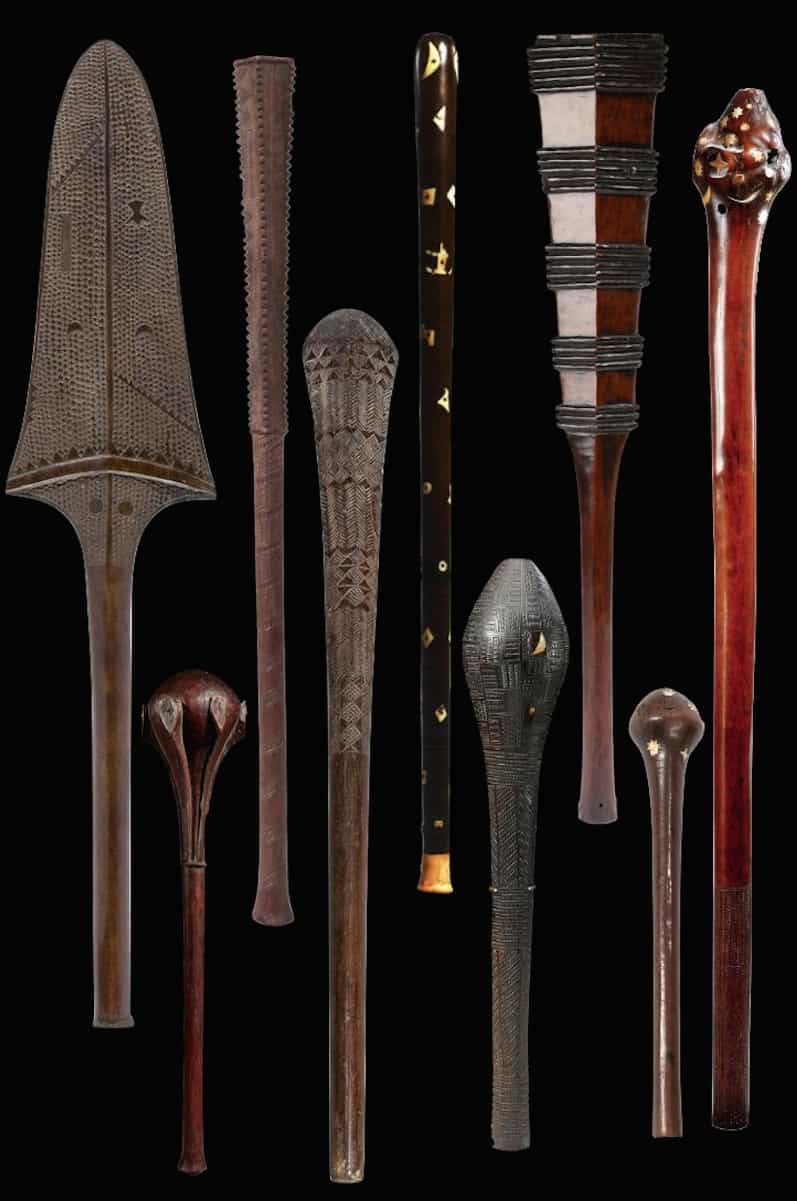
Tongan Clubs general information
In general Tongan, clubs are more valuable than Fijian clubs. They are more refines and have better workmanship.
The quality of the carving affects price with fine work being generally more valued. A shiny worn patina preferred to a dry patina. Stone carved 18th-century examples are rare and more valuable than 19th-century iron carved examples.
Another major factor that affects the value of Tongan clubs is the number and quality of glyphs on the club. The most popular glyphs with collectors are human figures.
Some Tongan clubs have marine ivory or pearl inlays which makes them very collectible. Fijians also use inlay on some of their clubs, and it is likely that they adopted this technique from the Tongans. Superb elaborately made clubs with inlay were ceremonial and served as badges of office
Styles of Tongan Clubs
Pakipaki Tongan War Clubs
Pakipaki are a tapering club with a very flattened diamond cross section and are the most common form of Tongan club. The paddle club with its rounded upper end was often distinguished by finely carved decoration over its entire surface. It was sometimes found with and without a transverse ridged collar or cross rib.
Clubs of this form were also found in Samoa but Samoan clubs tend to be more angular and collar features more profuse. In general, the finish on Samoan clubs is poorer and the engraving less extensive and less intricate.
In combat they were designed to cut flesh and break bone.
These clubs were also found in Fiji but were Tongan imports.
Examples shown here are exeptionally fine. Most clubs just have panels of geometric designs




Apa’apai Coconut Stalk Clubs

The Tongan Apa’apai club has a diamond-sectioned flat-topped head. It is sometimes referred to as a coconut-stalk club. These clubs often have some of the best examples of glyphs on any Tongan club. Some Apa’apai have a slightly concave top.
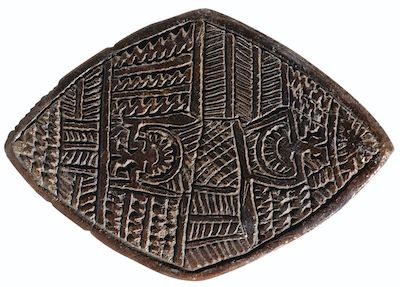
Apa’apai in cross-section from the top.
Glyphs are normally absent.

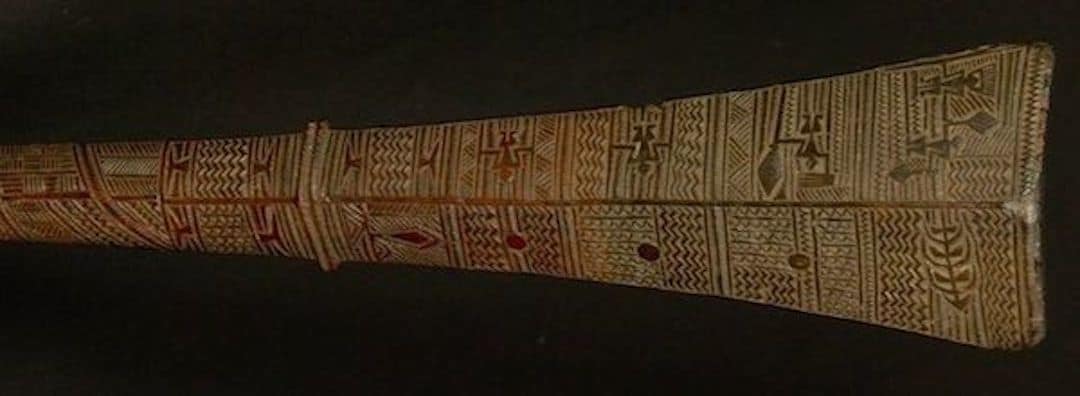

Povai Tongan War Clubs



Povai are a pole club used for bludgeoning.
The pole club is like a baseball bat in shape with the same flared rounded head. Most examples carved in panels of dogtooth design from top to bottom. These clubs are called Bovai by Fijians and it is likely Povai are a Tonganisation of these Fijian Bovai clubs.
Fijian Bovai often lack the panels of geometric design or just have it at the bottom as a hand grip.
Tongan Paddle Club
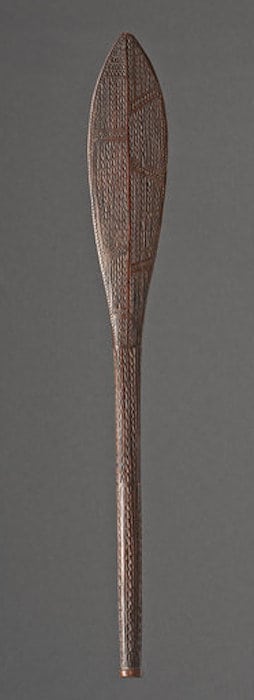
Paddle clubs from Tonga were never used as paddles. They get the name purely from the shape. They are used in a similar manner as the Tongan Pakipaki to break bone and cut.
Many paddle clubs were also used for ceremonial dancing and normally have segments of geometric carving but lack glyphs and inlay.
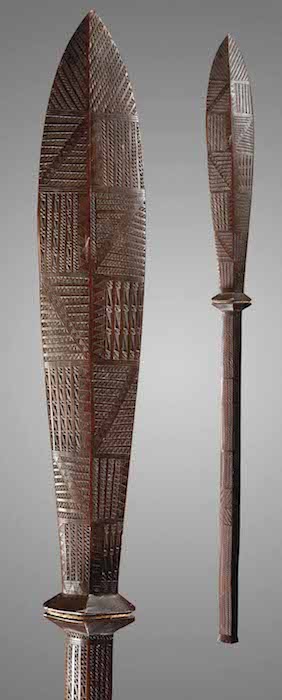
Kinikini Tongan War Clubs
KiniKini
These clubs were only owned by High Chiefs and powerful native Priests. Priests and chiefs with this club on a battlefield were exempt from actual combat. These broad cluds acted as shields against arrows and throwing clubs.
They often have two circular motifs that represent eyes that also offer spiritual protection.
These clubs are rare and collectable.
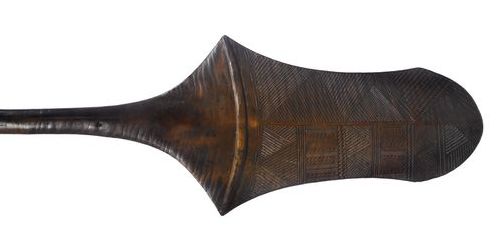
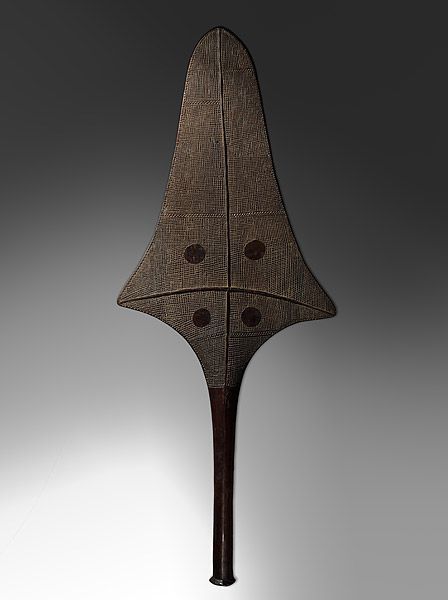
Pukepuke Tongan War Club

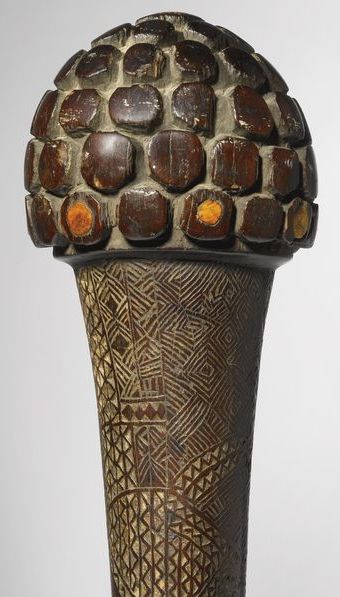
Pukepuke war clubs are the Tongan equivalent to the Fijian Bulibuli. Tongan Pukepuke clubs are much rarer than the Fijian equivalent. Pukepuke have better workmanship and are more likely to be intricately carved along the shaft.. They are a Tonganese version of an originally Fijian club.
These long heavy clubs were best used in open grassland fighting.
They are rare and account for less than 3 percent of Tongan clubs.
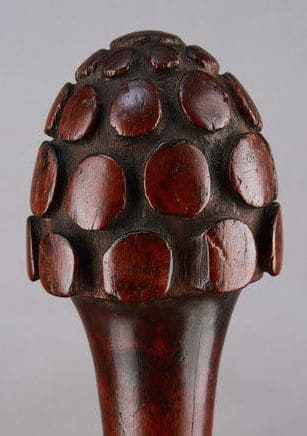
Kolo Tongan Throwing Clubs
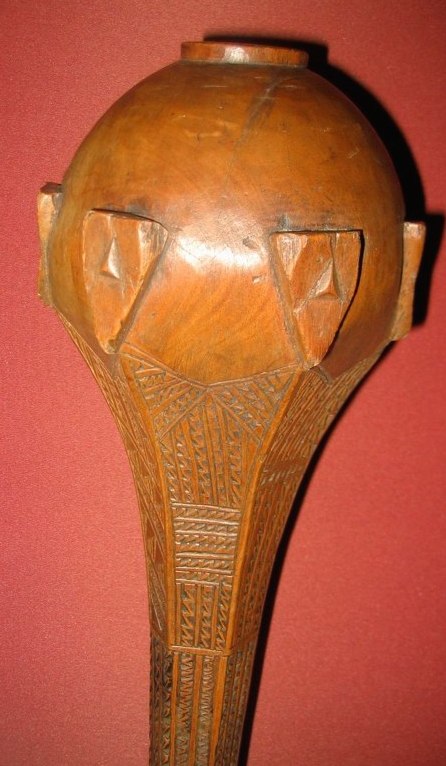
Kolo –
The short throwing Tongan club. These clubs are similar to Fijian Ula and it is likely that throwing clubs originated in Fiji and spread to Tonga.
Tongan throwing clubs are far rarer than Fijian Ula and tend to have a higher degree of workmanship. The head shape on a Kolo is more spherical than an Ula.
It can be very difficult to tell some Fijian Ula made by a Tongan craftsman on Fiji from a Kolo club.


Fijian Ula made by a Tongan craftsman

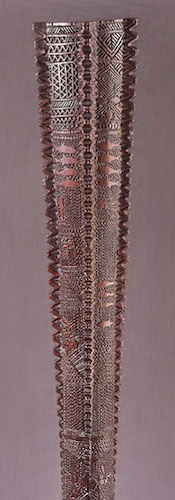


Paki Dance Club
Dance paddles were for a dance called me’etu’upaki. During Cook’s time, Tongans performed this type of formal dance in connection with the Tu’i Tonga’s harvest ceremonies.
Tongan War clubs
Tongan clubs can be often differentiated from similar Fijian club forms by the presence of a lug for a wrist thong at the base of the butt. They can be further differentiated from Samoan clubs, which also have a lug, on the basis of lug form. In Samoan examples, the lugs are usually triangular and occupy the entire width of the club base. In Tongan clubs, these lugs are more often rectangular or arched and do not traverse the width of the base. Sometimes Tongan weapons have holes chiseled into the base for the attachment of wrist thongs”
If you enjoyed this article you may also enjoy New Guinea sculpture, Polynesian War Clubs or Aboriginal weapons
Tongan Club PDF
Journal of the polynesian society paper on Tongan Clubs
All images in this article are for educational purposes only.
This site may contain copyrighted material the use of which was not specified by the copyright owner.

